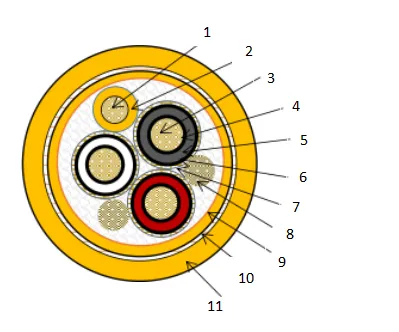Oct . 31, 2024 06:28 Back to list
din swing check valve
Understanding DIN Swing Check Valves
Swing check valves are crucial components in various piping systems, ensuring that flow direction is maintained and preventing backflow. Specifically, DIN swing check valves are designed according to the standards set forth by the Deutsches Institut für Normung (DIN), ensuring reliability and compatibility within European and international applications.
What is a DIN Swing Check Valve?
A DIN swing check valve allows fluid to flow through it in one direction only, using a hinged disk or flap that swings open with the fluid flow and automatically closes when the flow reverses. This mechanism protects pumps and other equipment from potential damage caused by backflow. The DIN standard includes various specifications concerning size, materials, and pressure ratings, making these valves suitable for various applications, from water systems to industrial processes.
Applications
DIN swing check valves are commonly used in water treatment facilities, chemical processing plants, and HVAC systems. Their robust design ensures they can handle high pressure and temperature variations, making them ideal for industries where reliability is paramount. Additionally, the streamlined design typically results in low-pressure drops when fluid flows through the valve, enhancing overall system efficiency.
Construction and Materials
din swing check valve

Constructed from various materials, including cast iron, stainless steel, and bronze, DIN swing check valves can be tailored for specific applications based on the fluid type and operating conditions. The use of durable materials ensures longevity and resistance to corrosion and wear, which is vital in maintaining the integrity of piping systems.
Benefits of Using DIN Swing Check Valves
One of the primary advantages of DIN swing check valves is their simplicity in design, which allows for easy installation and maintenance. They can be installed in horizontal or vertical positions, making them versatile for different piping configurations. Furthermore, these valves provide minimal pressure loss, contributing to energy savings and overall efficiency in fluid transport systems.
Another benefit lies in their automatic operation. There are no external controls needed, as the valve responds to the flow of the fluid, ensuring optimal performance without requiring manual intervention. This feature is particularly beneficial in large-scale industrial applications, where constant monitoring can be challenging.
Conclusion
In summary, DIN swing check valves are essential components in modern piping systems, offering reliability, efficiency, and ease of use. Their adherence to stringent DIN standards ensures that they meet the necessary performance criteria, making them a preferred choice across various industries. As systems become increasingly complex, the importance of robust and efficient flow control solutions like DIN swing check valves continues to grow.
Share
-
Reliable Wafer Type Butterfly Valves for Every IndustryNewsJul.25,2025
-
Reliable Flow Control Begins with the Right Ball Check ValveNewsJul.25,2025
-
Precision Flow Control Starts with Quality ValvesNewsJul.25,2025
-
Industrial Flow Control ReliabilityNewsJul.25,2025
-
Engineered for Efficiency Gate Valves That Power Industrial PerformanceNewsJul.25,2025
-
Empowering Infrastructure Through Quality ManufacturingNewsJul.25,2025